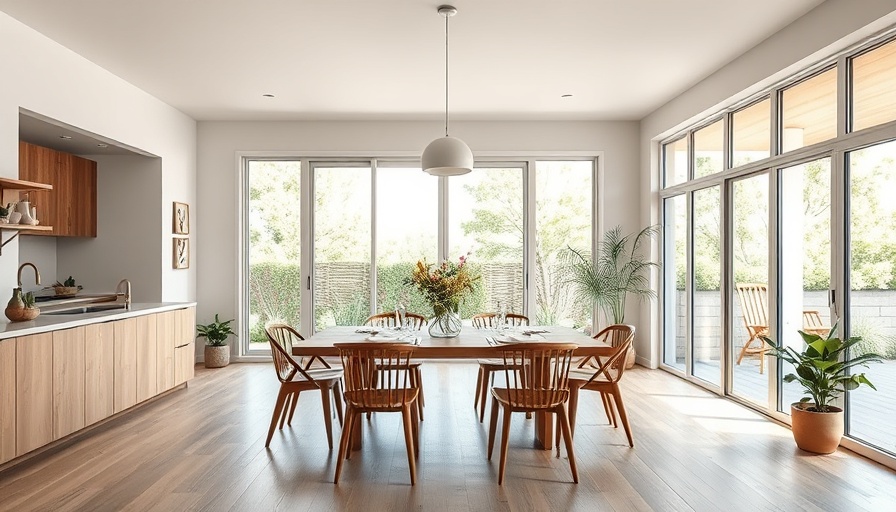
Integrating Indoor-Outdoor Living: The Art of Design
When it comes to summer homes, nothing captures the spirit of coastal living like a design that effortlessly merges indoor and outdoor spaces. This principle is at the heart of the dreamy Cape Cod retreat designed by Peyton Lambton and Sarah Waldo, illustrating how effective design can elevate functionality while maintaining a refreshing and inviting atmosphere.
The Importance of Color and Texture
Lambton and Waldo approached the project with a vibrant mindset, aiming to cultivate a home that was lively yet tranquil. The use of colors was strategically deployed throughout the house. Bright pops of color harmoniously work with textured materials to enliven the spaces. For instance, the introduction of wood accents not only brings warmth but also anchors the playful aesthetic that the homeowners envisioned.
Functionality Meets Aesthetic Charm
Functional design is crucial, especially in a beach house that serves as a gathering place for family and friends. The layout of the Chatham home features an open floor plan that enhances a seamless flow from room to room. Both the living areas and outdoor spaces were designed to cater to relaxation as well as entertainment. The ability to socialize indoors or bask in the sun outdoors allows for a versatile living arrangement that reflects the ideal summer lifestyle.
Key Areas of the House
The indoor-outdoor integration goes beyond mere aesthetics, as seen in key areas like the screened-in porch. Here, filter sunlight graces diners during meals, protecting them from the elements while still offering the fresh air characteristic of coastal living. The dining space exemplifies the designers’ intent, with sliders that can be opened to merge the interior seamlessly with the screened porch. This thoughtful design promotes a sense of unity between nature and home.
A Kitchen with a Twist on Tradition
The kitchen is perhaps one of the most striking areas of the home, centered around coastal blue cabinetry that mirrors the ocean. However, the design team sought to push the boundaries of traditional kitchen aesthetics. By introducing unique fabrics like the Walter G. Tangier Denim Linen for the bar stools, they effectively blend function with flair, proving that kitchens can embody personality while remaining practical.
Future of Coastal Home Design
As we look ahead, it’s clear that the trends for coastal homes are shifting toward more personalized, playful designs. This Cape Cod retreat is emblematic of a growing desire for fun, unexpected elements that reflect the individuality of the homeowners. As interior designers draw inspiration from clients who wish to express their unique stories through their spaces, we can anticipate an exciting evolution in summer home designs across coastal America.
In conclusion, the integration of indoor and outdoor living spaces, highlighted by vibrant color choices and textural depth, not only enhances the visual appeal of this Cape Cod retreat but also reinforces the essence of summer living. This carefully curated home is more than just a seasonal escape; it’s a testament to the potential of modern design to create havens that are both lively and relaxing.
#IndoorOutdoorLiving, #CoastalDesign, #CapeCodRetreat, #PeytonLambton, #SarahWaldo, #ColorfulInteriors, #FunctionalDesign, #ScreenedPorch, #CoastalKitchen, #HomeDesignTrends
 Add Row
Add Row  Add
Add 




Write A Comment